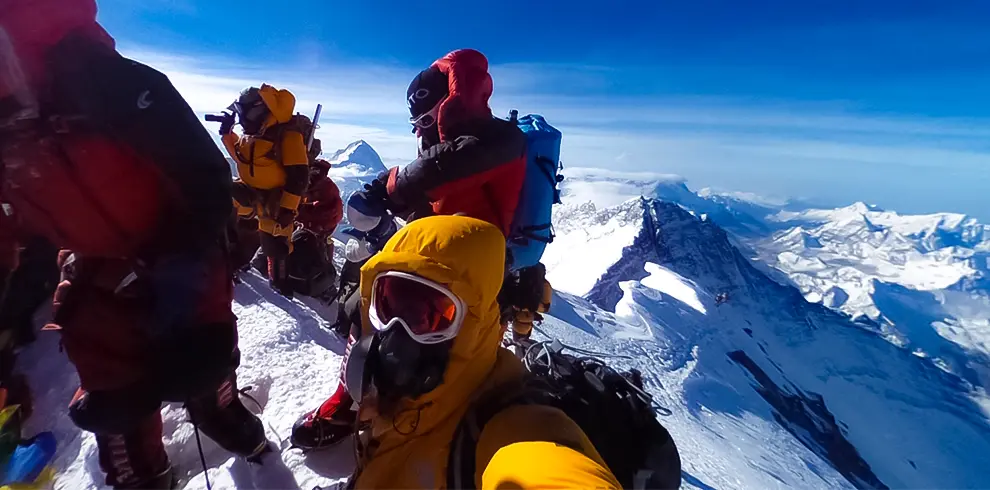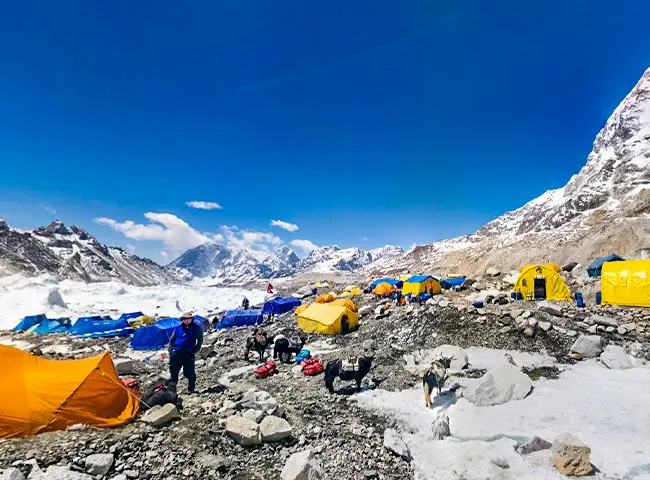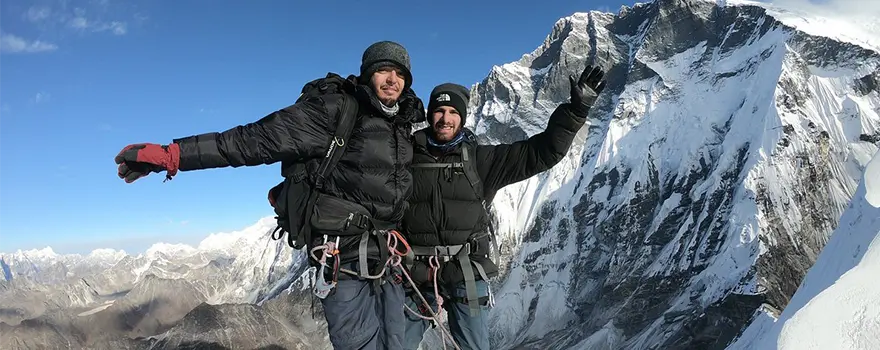Arrival in Kathmandu Airport and transfer to hotel Yak and Yeti or similar hotel accommodation in Kathmandu (1350M/4430ft)
1
2
Preparation, Briefings at Departments of tourism, Last minute shopping
3
Flight from Kathmandu to Lukla; Trek to Phakding (2650m/8694ft, 04 hrs); lodge accommodation
4
Trek from Phakding to Namche Bazaar through colorful Khumbu villages (3440m/11286ft, 06hrs); Lodge accommodation
5
Rest day for acclimatization; you will be hike to famous Everest View Hotel (3800m/12487ft, 3hrs) to catch a glimpse of Everest; explore Hilary and Sherpa museum at Namche in the evening with slide show program.
6
Trek from Namche Bazaar to Tyangboche (3850m/12631ft, 05-06 hrs); visit significant Buddhist monastery; lodge accommodation
7
Trek from Tyangboche to Dingboche (4350m/14271ft, 4hrs) about 4-5hrs; catch glimpses of Ama Dablam and Lhotse; lodge accommodation
8
Acclimatization in Dingboche(4350M/14271ft) hiking up to chhukung-re.
9
Trek from Dingboche to Lobuche (5018m/16463ft, 4-5hrs); lodge accommodation
10
Trek from Lobuche to Gorakshep (5170m/16962ft, 3hrs); lodge accommodation
11
Morning acclimatize to Kalapathar (5554M) after breakfast Trek from Gorakshep to Everest Base camp (5200m/17060, 2hrs
12
Climbing period Summit Everest (8,848m/ 29029ft)
13
Clean up and depart to base camp
14
Trek from Everest base camp to Dingboche(4350m/14271ft, 4hrs) , lodge accommodation
15
Return to lukla
16
Fly to kathmandu from lukla
17
trek from Everest base camp to Dingboche(4350m/14271ft, 4hrs) , lodge accommodation
18
Transfer to the airport for final departure

















